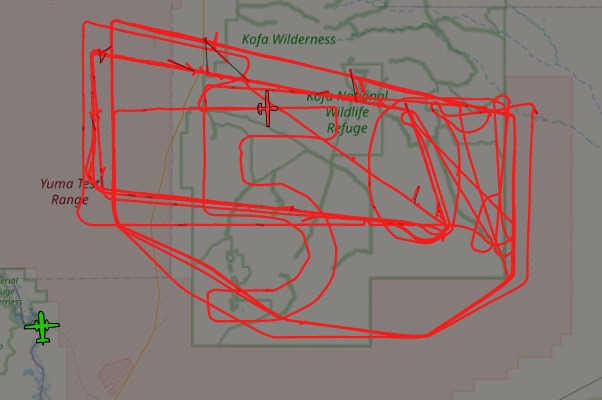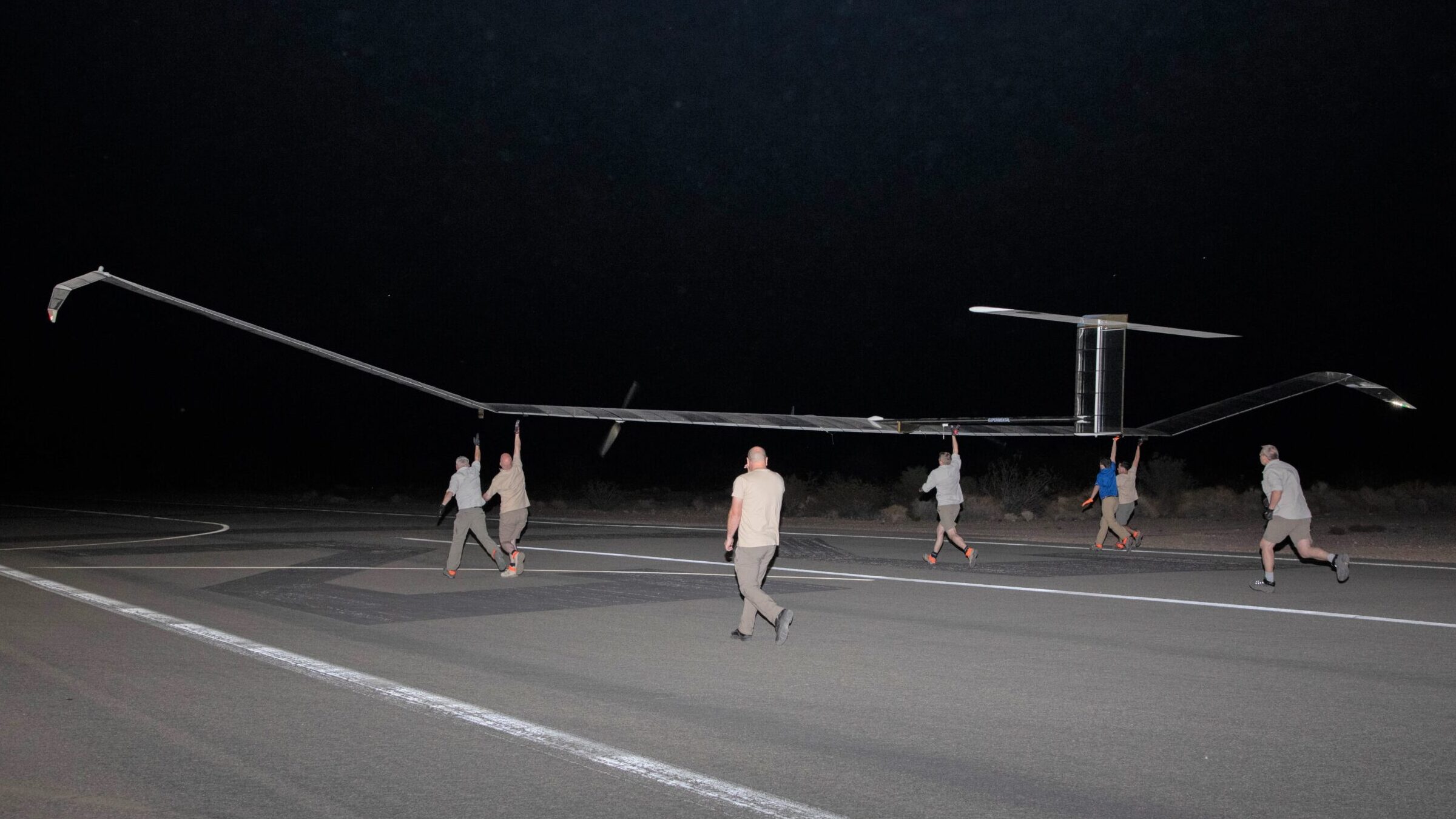The Army’s experimental Zephyr S ultra-long endurance unmanned aerial system, which first took to off on its latest, record-breaking mission in June, is still airborne over the Arizona desert and is expected to remain flying for at least another week.
The Zephyr stratospheric UAS took off June 15 from Yuma Proving Ground (YPG) for what was originally planned to be a 30-day flight. It has now been aloft for 50 days and “continues to perform beyond expectations,” Madeline Winkler, a spokesperson for the Army Futures Command’s Assured Precision Navigation and Timing (APNT) Cross-Functional Team (CFT) told The War Zone in an email yesterday. Online flight tracking sites showed that the aircraft’s flight pattern had traced a “50” high above Arizona’s Kofa National Wildlife Refuge, which is adjacent to YPG, as it passed that number of days in flight.

Built by Airbus, Zephyr S is powered by the sun, with solar panels covering the upper surfaces of its 75-foot wingspan. Weighing about 165 pounds in total, the aircraft carries batteries that are charged during the day to power flight overnight. Zephyr set the record for sustained UAS flight — 26 days — on this same mission and has now nearly doubled that benchmark. The aircraft flew from Arizona to Belize over the Gulf of Mexico earlier in its ongoing groundbreaking test.
Still droning around in the sky over Arizona on its current flight, Zephyr S is now approaching 60 days without touching down, the goal initially set for its next test flight.

Zephyr S is designed to fly in the stratosphere, at altitudes above commonly used flight levels. It has been hanging out primarily around 60,000 feet, similar to where RQ-4 Global Hawks roam. While it can fly fairly undisturbed at that height, bringing the prototype through the more turbulent troposphere — the zone up to about 35,000 feet above the earth — apparently poses risks to the aircraft.
“Zephyr was specifically designed for ultra-long endurance stratospheric flight, and as you might suspect, weather conditions in the stratosphere are very different than they are in the troposphere,” Winkler said. “Since this is a prototype aircraft, a very cautious approach is being taken in determining how long to fly the aircraft and exactly when to land.”
At stratospheric altitude, Zephyr S has many practical applications for the Army. It can carry any number of payloads including electro-optical/infrared and hyperspectral cameras, radars with passive frequency and synthetic aperture imaging functionality, other airborne early warning equipment, light detection and ranging (Lidar) laser imaging systems, and automatic identification system (AIS) transponders, according to Airbus. Communications relay payloads — acting as a pseudo satellite or a high-flying cell tower of sorts — is also a key capability being eyed for the system, as have ones that would help with navigation in GPS-denied operating environments. The Army has not said what payload is currently on the aircraft.

Zephyr S’s ongoing flight was designed to test the aircraft’s energy storage capacity, battery longevity, solar panel efficiency, and ability to stay on a prescribed station. It already has accomplished several firsts in its career, including the first flight into international airspace, the first flight over water, the longest continuous flight using satellite communication controls, and the farthest demonstration from its launch point, while carrying a commercial, off-the-shelf payload.
“Ultra-long endurance unmanned platforms have the potential to provide significant military capabilities and enhanced confidence as part of the Army’s diversified multi-layered architecture,” said Michael Monteleone, director of the APNT/Space CFT. “We have seen incredible progress in high-altitude platforms in recent years. This experimentation allows us to build on that knowledge by demonstrating multiple payload types, fully exploring the military utility of stratospheric operations, and modernizing areas of deep sensing, long-range targeting, and resilient communications.”

A second Zephyr flight is scheduled “in the coming weeks” over the Pacific Ocean, though it is unclear whether the timeline for that flight will stretch because the aircraft has remained airborne. That flight was the one scheduled to test whether the aircraft could stay aloft for 60 days, so it may be superfluous at this point. The second flight was meant to demonstrate a prototype payload, developed by Army Futures Command, over multiple combatant commands, and continue to inform high altitude requirements, the Army said.
A UAS that can carry basically any payload — within a certain weight threshold — and stay aloft for very long periods of time at low cost would be a significant capability for an Army on the move in austere environments. Without the expense and complexity of launching a satellite, a Zephyr flying high could gather intelligence, spy on enemy positions, and act as a communications node connecting forward-deployed troops, ships, aircraft, and command posts over great distances.
A slow, defenseless drone would be easy prey for enemy fighters or air defense systems, but Zephyr or some similar ultralight, super-efficient unmanned air vehicle, is a relatively inexpensive method of establishing multi-layered battlefield communication infrastructure using tiers of systems of various shapes and sizes. It isn’t clear just how detectable it even is, for that matter.
The endurance shown in the ongoing test is ideal for operations in the vast Pacific Ocean, where the U.S. military expects to step up its presence as a counter to Chinese expansionism in the region. But really, it could be used anywhere. Persistent intelligence, surveillance and reconnaissance, or ISR, often tops the wishlists of combatant commanders like outgoing Africa Command Chief Gen. Stephen J. Townsend. As Defense Daily’s Matthew Beinart recently reported, long-endurance surveillance systems are badly needed for keeping an eye on the vast African continent. A UAS like Zephyr could fit the bill.
We will keep you in the loop as to Zephyr’s historic mission. Stay tuned.
Contact the author: Dan@thewarzone.com
